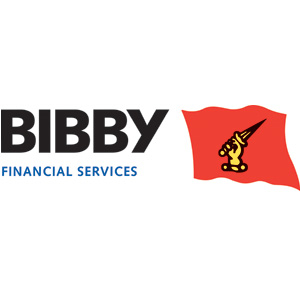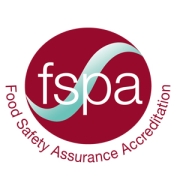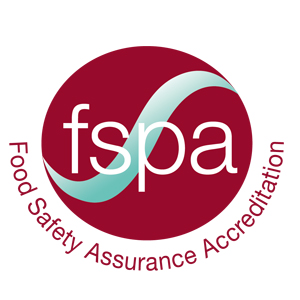

- Nationwide housing completions 25% higher than the previous three years – but new home supply will drop-off from mid-2023 due to decline in commencement notices for new schemes
- Number of residential properties for sale in Dublin currently is 60% higher than previous 12 months
- 180,000 sqm of grey space available in Dublin office sector – one third of all supply
- Industrial rent rates rising by 20%, at levels beyond those reached in mid / late 2000’s
- Vacancy rate on Grafton Street falls to 7.6% due to arrival of seven new operators
€5.7bn was invested in commercial property assets in 2022 as accurately priced properties continued to attract attention, according to a new report today from Lisney, Ireland’s largest independently-owned multi-disciplinary property advisory company.
Entering 2023, the overall investment market is still a process of price discovery and limited activity is occurring or likely to occur in the coming months. However, Lisney is optimistic for recovery around September 2023 and believes that once this comes, it will happen quickly.
While the overall commercial property market dynamics changed last summer as interest rate increases took hold, the industrial occupation sector remained strong in 2022. Currently, numerous high-profile occupiers are seeking space or negotiating deals. Entering the new year, combined requirements exceeded 460,000 sqm across Dublin, the equivalent to between 15 and 18 months take-up.
The two main talking points in the Dublin office market last year were the adjustments in the global tech industry and continued remote / hybrid working. Both trends resulted in the rise of grey space, where there is now 180,000 sqm available and more is due in 2023. Currently, this is 32% of all supply and accounts for 5.1 percentage points of the 13% city centre vacancy rate.
Works will continue on office buildings under construction (280,000 sqm currently), however there will be little or no new starts in the near term. Lisney states this is due to the higher cost of both finance and building materials.
Retail wise, Grafton Street had a very successful year in 2022. The vacancy rate (based on the number of units) fell to 7.6%, with seven new operators taking stores. These retailers were mainly from overseas and agreed deals on adjusted terms to those sought prior to the pandemic. While the vacancy rate is higher on Henry Street (close to 13%), there will be further interest in this area during the 2023. However, retailers will continue to assess the ongoing viability of their business, which may result in renegotiated property deals.
Heading into 2023, the number of residential properties for sale in Dublin was almost 60% higher than the 12 months previous. Lisney says this will mean fewer instances of frustrated buyers bidding far in excess of asking prices in the coming months. Part of the supply increase is being fuelled by weary investors selling their buy-to-lets as life as a landlord has become too stressful with rent caps and eviction bans along with possible additional changes. Further investors will also leave the market this year which will be good news for buyers but unwelcome news for renters with even more difficulties in a severely undersupplied lettings market.
A full breakdown of the key sectors contained in the Lisney Outlook 2023 report is outlined below, while the full in-depth report can be accessed here: https://lisney.com/wp-content/uploads/2023/01/Lisney-Outlook-2023-PDF.pdf
RESIDENTIAL:
Although the residential market was characterised by buyer frustration at the start of 2022 in Dublin, this pivoted during the summer months with the 10% to 13% annual growth rate in Dublin prices registered since mid-2021 easing, with purchasers becoming more price sensitive. This was due to the geopolitical and macroeconomic factors, most notably the war in Ukraine, rapid rises in the cost of living (particularly energy), interest rate hikes for the first time since 2011 and less disposable income.
2023 will be a more challenging year for the market with the timing of sales being very important for success. Lisney predicts that buyer price sensitivity will remain in place for at least six months of the year with no increases in price. Market stability during the second half of the year will greatly depend on how supply evolves and on wider political and economic issues both in Ireland and globally.
At the upper end of the market (+1m), there is still a large number of sales occurring on and off market. Dublin supply was at an all time low in January 2022 but steadily increased over the year, partially due to investors selling buy-to-let properties.
Cash purchases will continue to dominate country home sales. International buyers will be the most active in the Irish country homes market this year, especially homes on the higher price scale. Those from overseas will be a mix of Irish abroad but also citizens of other countries seeking full-time or part-time holiday homes in Ireland. The majority will be from the US but European countries will also feature strongly. UK demand, with the exception of expats, will continue to feature less than was the case pre-Brexit. New supply will be slow in the early months of 2023, but by spring, the number of county homes on the market will grow.
DEVELOPMENT LAND:
Significant construction cost inflation during 2022 (various materials increased anywhere between 10% and 110%) along with the higher cost of finance has impacted the viability of schemes. It is likely to be at least mid-2023 before demand for sites improves and into the second half of the year before activity levels increase. Many primary and secondary funders will remain largely absent from the market during the beginning of 2023. This will mean that cash purchasers will be the dominant buyer short-term.
A comprehensive new planning act is due in 2023, which will replace the 2000 Act and all of its amendments There was some upheaval in the market last year in anticipation of this legislation as many were awaiting more certainty. Once adopted however, it should assist in providing greater certainty to developers and landowners. It should also help in addressing long delays in planning decisions, addressing the appointment of staff to An Board Pleanála, which is currently vastly under resourced and help with streamlining judicial reviews.
The Residential Zoned Land Tax will apply to serviced residentially zoned lands from the 1st January 2024. However, the final identification of applicable lead will be during 2023. It will be important for landowners to make submissions to the relevant local authority if they intent on keeping lands in their existing use for the foreseeable future.
NEW HOMES:
In 2022, nationwide housing completions were at their highest level in 13 years with an estimated 26,000 units finished, while this remains 25% higher than the previous three years, this still remains well below what is required. With rising construction costs taking hold, commencement notices for new schemes began to decline during summer 2022. This means that from mid-2023, new home supply will drop-off. First-time-buyers make up just over half of the new home market and continue to benefit from government backed schemes such as the Help-to-Buy scheme which remains in place for 2023 and 2024.
INVESTMENT:
In the investment sector, marketing dynamics quickly changed in Summer 2022. Entering 2023, the investment market is still a process of price discovery and limited activity is occurring or likely to occur in the coming months. There is a disconnect between vendors price expectations and what purchasers (and their credit committees) are willing to pay. Yields will drift further, however, Lisney is optimistic for recovery and activity around September 2023 and believes that once this comes, it will happen quickly.
OFFICES:
The two main talking points in the Dublin office market in 2022 were the adjustments in the global tech industry and continued remote / hybrid working options. Both trends resulted in an increase of grey space, where there is now 180,000 sqm available and more is due in the first half of 2023. Currently 32% of all supply accounts for 4.2 percentage points of the 13.2% vacancy rates across Dublin (or 5.1 percentage points of the 13% city centre vacancy rates). Lisney predicts there are three sectors to look out for in 2023:
- Highly profitable professional services firms
- Smaller scale indigenous tech
- The Irish State
Entering 2023, there are active requirements in the market and about 130,000 sqm of space reserved. It is likely demand and activity will be weaker during the first half of the year but will strengthen over the second half. Works will continue on office buildings under construction (280,000 sqm), however, there will be a little or no new starts in the near term as a result of the higher cost of both finance and building materials. Lisney predicts this will create future risks in the market with a lack of A rated buildings in three to five years’ time, which will cause issues for occupiers needing to meet ESG requirements
INDUSTRIAL:
There are numerous high-profile occupiers currently seeking space or negotiating deals, and entering 2023, combined requirements exceeded 460,000 sqm across Dublin. This is equivalent to between 15 and 18 months take-up. This suggests another good year for 2023. However, supply constraints are also likely to affect activity levels this year with Dublin’s vacancy rate now sub -2% with less than six months stock available. On a positive note, reconstruction of smaller / trade counter type units will recommence this year; none have been built in over 15 years.
Headline rents continued to grow last year with prime rates rising by almost 20% and reaching levels beyond that of mid / late 2000’s. This was due to both higher construction costs but also competition for buildings. The pace of growth this year will be slower. Landlords will remain bullish on lease terms with any new buildings achieving 25-year leases with break options pushed out to year 12 or 15.
ESG is also coming more into focus in the logistics space for larger landlords and occupiers. As the operations of logistics companies usually have a large carbon footprint, many are seeking ways to reduce embodied carbon in their warehouses. For example, timer-frame warehouses are being considered instead of steel frame, where the frame can be 30% more expensive. There have been a few examples of this in Dublin and this trend will continue to grow over the years ahead.
RETAIL:
In the latter half of 2022, there appeared to be more acceptance that there has been a change in city centre footfall particularly regarding office workers and hybrid working. Tuesday, Wednesday and Thursday are the busiest weekdays in the city centre, however, there is a push from employers to increase the number of staff working from the office which may result in higher footfall during 2023. Retailers have reported that footfall is ultimately down two days a week.
Despite this, Grafton Street had an excellent year in 2022 with the vacancy rate (based on the number of units) falling to 7.6% with seven new operators taking stores. These retailers were mainly from overseas and agreed deals on adjusted terms to those sought prior to the pandemic. While the vacancy rate is higher on Henry Street (close to 13%), there will be further interest in this area during 2023. The mixed-use scheme at Cleary’s Quarter on O’Connell Street, along with the sale of the former Debenhams store (if concluded in early 2023), will bring new life and vitality to the northern shopping core.
CORK:
The Cork investment market will remain quiet for at least the first six months of this year. Most investors have adopted a wait-and-see approach, delaying their decisions until there is greater clarity on interest rate stabilisation (particularly in the EU and US) and a better understanding of when market prices will settle.
The development land market experienced many similar trends in the overall investment sector in 2022. Prices fell as schemes became unviable, impacted by severe construction cost inflation, higher costs of finance and government policy changes. Cash purchasers will be the dominant buyer type of land in the short-term, but will only consider land they deem good value.
The main talking points in office space both in Cork and urban areas during 2022 were working from home and the tech industry. Grey space (or sub lettings) mainly from tech occupiers have been slower to impact the Cork market. Cork is also about 12 months behind Dublin where almost 32% of all supply is now categorised as grey. However, this trend is now becoming more noticeable in Cork with several occupiers considering subletting surplus accommodation. Lisney predicts this will push vacancy levels higher in 2023 (which are currently at around 14%) and may impact headline rents which have been stable in Cork since 2020. Even if rents remain unchanged, there will be greater incentive packages on offer from landlords. On a positive note, grey space is usually fully-fitted, which provides cheaper solutions for businesses requiring flexible or short term accommodation.
The industrial sector will continue to experience high demand in 2023. However, occupiers will experience difficulties sourcing space which could impact full year activity levels. The market now has a vacancy rate of less than 2% and options are limited. Any new buildings being developed have taken mid-construction and have not been added to the supply. Speculative building will be limited in 2023 due to rising construction costs and issues around finance. This may result in larger occupiers in the market agreeing terms on a design-and-build basis. All this will result in further rental growth in 2023, having increased already by 11% last year.
The retail sector has been severely impacted by global events in recent years. Just as retailers were beginning to recover post lockdown, rising inflation and the resultant increase in interest rates along with weaker consumer sentiment started to take hold. Despite this, property deals have and are actively occurring on key retailing pitches with the vacancy on Patrick Street at 21% and 12% on Oliver Plunkett Street (based on the number of units). While recent deals have been on adjusted terms to those who sought in 2019, opportunities are on offer to retailers who are in a position to capitalise them.
David Byrne, Lisney Managing Director of Lisney said: “2022 was a very exciting year in Lisney as we continued to invest heavily in the business, most notably the acquisition of the Sotheby’s International Realty franchise for our residential business which has proven a great success. In addition, we welcomed 37 new staff to the business in the year reflecting our growing client base across commercial, valuations and residential businesses.
Despite the various challenges which might be faced by the property sector in any given year, the most enduring will be the subject of sustainability and the role the real estate sector must play in this space. This will remain a central tenet of our strategy in 2023 as we work with colleagues and the communities in which we operate for a more sustainable future for all.”
Aoife Brennan, Lisney Research Director, says: “Lisney first produced an annual outlook document in 1958 so this is our 65th publication covering all parts of the commercial and residential markets. 2022 was a strange year, at a societal and economic level, as well as in the Irish property market. We began the year optimistic for a post-COVID recovery with demand strong. However, as the fallout from the war in Ukraine took hold with rising interest rates and changing macroeconomic indicators, the market slowed mid-year. We believe 2023 will also be a year of two halves, but with demand and activity starting slow and building over the year, especially into the latter half as hopefully there is more certainty on interest rate stability and improvement in global economies. A trend that will carry across the entire year will be the increased awareness and acknowledgement of importance of ESG”
For more details about Lisney, visit www.lisney.com
You can also follow Lisney on Twitter: LisneyIreland and Linked In: Lisney Ireland


















